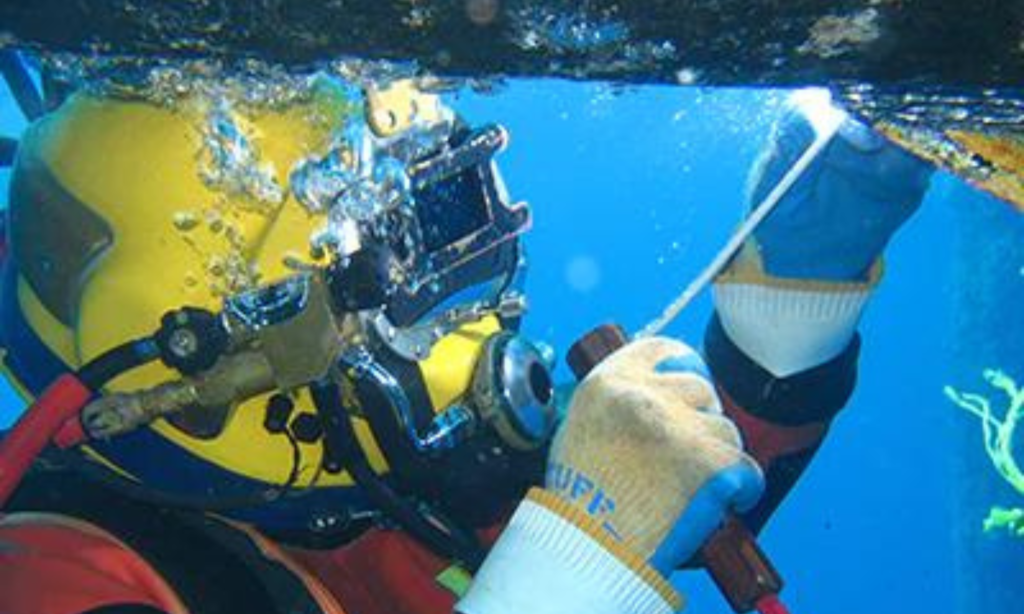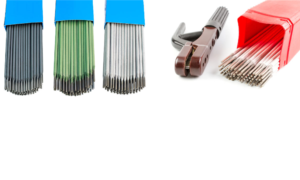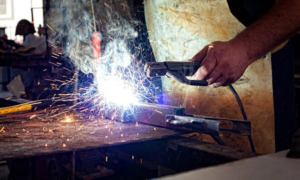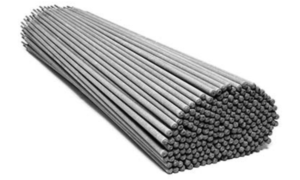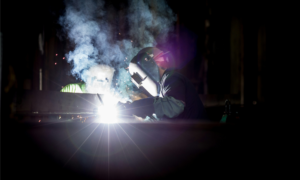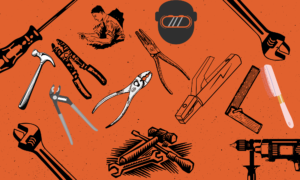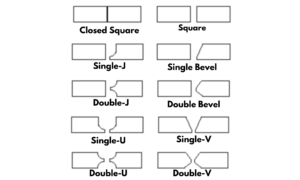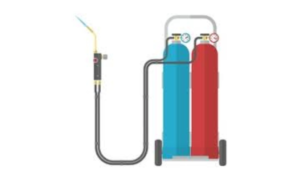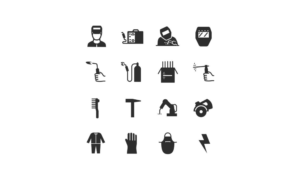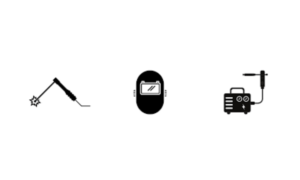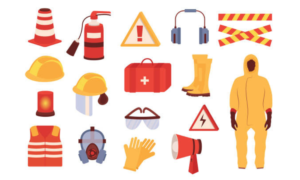Underwater welding positions are typically categorized as wet welding or dry welding. Different positions are required based on the job’s depth, location, and structure.
Underwater welding, a highly specialized field, combines diving skills with welding expertise to repair and install structures under the sea. These professionals face unique challenges, such as varying water pressures and the need for diving proficiency. Two primary methods, wet welding and hyperbaric (dry) welding, dictate the positions and techniques used.
Wet welding is directly performed in the water, with the diver exposed to the elements, while dry welding takes place inside a specially constructed positive pressure enclosure submerged in the environment. Divers must be adept at both to ensure the integrity and strength of the welds. This skill set requires rigorous training, as welders must be able to operate in a range of underwater positions to access and repair complex marine structures. Understanding the nuances of each position is crucial for the success and safety of underwater welding projects.
Diving Into Underwater Welding
History And Evolution
- 1930s: Underwater welding debuts, revolutionizing marine repair.
- 1940s: World War II increases demand, propelling technological advancements.
- Post-war era: techniques improve, safety practices strengthen.
- Modern times: robotics and automation join forces, enhancing precision.
Comparison To Traditional Welding
| Aspect | Traditional Welding | Underwater Welding |
|---|---|---|
| Environment | Dry, controlled. | Wet, variable pressure. |
| Equipment | Stable power source. | Waterproof, insulated tools. |
| Skills | Mastery of joints and metals. | Diving certifications, adaptability. |
Essential Skills For Underwater Welders
Proficiency In Welding Techniques
Underwater welders must master a variety of welding methods. Smooth and strong welds are non-negotiable. These include:- Shielded Metal Arc Welding (SMAW): For joining steel and cast iron.
- Flux-Cored Arc Welding (FCAW): Useful in repair and construction.
- Gas Tungsten Arc Welding (GTAW): For precise welds on small areas.
- Plasma Arc Cutting (PAC): For cutting with precision underwater.
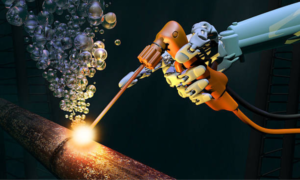
Advanced Diving Certifications
The underwater part of the equation is just as critical as welding. Welders must hold advanced diving qualifications. These include:- Commercial diving certification.
- Underwater Welder Certification.
- Diver Medic Technician (DMT) Certification.
- Deep-sea diving skills.
Physical Fitness And Stamina
Underwater welding is physically demanding. Welders need:| Skill | Importance |
|---|---|
| Strength | For lifting heavy gear. |
| Endurance | To work long hours under pressure. |
| Flexibility | To maneuver in tight spaces. |
| Dexterity | To handle tools with precision. |
Common Underwater Welding Positions
Wet Welding Dynamics
Wet welding occurs directly in the water. Welders use waterproof electrodes here. Positions differ based on job specifics. Some positions are:- Flat position: welding on the top side of a surface.
- Vertical position: welding on a vertical surface.
- Overhead position: welding from beneath a surface.
- Horizontal position: welding from the side of a structure.
Dry Welding Environments
Dry welding takes place in a chamber sealed around the structure. It’s like surface welding, but underwater. Here are the common dry positions:- Divers enter a dry habitat on the seabed.
- The area around the welding site is evacuated with water.
- A controlled environment is set up.
- Standard welding techniques are then used.
Hyperbaric Welding Scenarios
Hyperbaric welding is a mix of wet and dry methods. A special chamber fills with gas to create a dry space. This kind is tricky and needs skill. You might see positions like:| Position | Description |
|---|---|
| Inside Chamber | Divers weld within the hyperbaric chamber. |
| Chamber Orientation | The chamber aligns with the welding spot. |
Safety Protocols And Challenges
Safety Equipment And Gear
The right gear is vital for ensuring survival. Divers need specialized equipment.- Welding helmet: protects from electric shock and debris.
- Waterproof gloves are essential for hand protection.
- Rubber suits: Ward against hypothermia.
- Boots with grips: Provide stability on slippery surfaces.
Dealing With Underwater Hazards
Underwater welders encounter unique challenges:- Extreme pressure changes: Can lead to decompression sickness.
- Unpredictable water currents: Complicate stability and precision.
- Low visibility: Heightens the risk of errors and accidents.
- Volatile gas pockets: Pose explosion threats.
- Electrical hazards: Demand careful management to prevent shocks.
Career Pathways In Underwater Welding
Education And Training
The journey to becoming a skilled underwater welder starts with robust training. Candidates must pursue formal education in welding, followed by specialized diving certifications.- High School Diploma or GED: This foundational step is crucial.
- Commercial Diving Training: Look for schools accredited by the Divers Certification Board of Canada (DCBC) or the Association of Commercial Diving Educators (ACDE).
- Certified Welder Program: Opt for programs certified by the American Welding Society (AWS).
| Program | Duration | Objective |
|---|---|---|
| Diving Certification | 6-12 Months | Gain proficiency in underwater navigation. |
| Welding Certification | 7-24 Months | Learn and practice welding techniques. |
Finding Employment Opportunities
- Network: Connect with professionals and join relevant associations.
- Job Boards: Utilize specialized job boards for marine and diving jobs.
- Apprenticeships: Gain hands-on experience under seasoned divers and welders.
Long-term Career Development
Continuous learning and skill refinement are key to longevity and success. Divers should:- Stay Updated: Keep up with industry standards and technology.
- Gain Experience: Tackle a variety of projects to build a diverse portfolio.
- Obtain Advanced Certifications: Pursue higher certifications for complex and higher-paying tasks.
Technological Advancements
Innovations In Equipment And Techniques
- Enhanced electrodes and power supplies bring improvements in stability and control.
- State-of-the-art welding rigs enable divers to perform tasks with greater accuracy.
- Wet spot welding technology significantly reduces the risk of hydrogen cracking.
| New Technique | Benefits |
|---|---|
| Hyperbaric welding | Allows for drier, more controlled conditions underwater. |
| Friction stir welding | Yields higher-strength joins with minimal distortion. |
Impact Of Robotics On Underwater Welding
Remotely operated vehicles (ROVs) and autonomous underwater vehicles (AUVs) now perform complex welds with minimal human intervention.- ROVs and AUVs can reach depths beyond human limits, ensuring consistent welds in extreme conditions.
- These robots minimize the need for diver exposure, thereby cutting down on the risks associated with deep-sea welding.
- With advanced sensors and programming, robots can adapt to varying currents and visibilities, making precise welds possible.
Real-world Applications And Projects
Underwater Construction And Repair
Strong currents, pressure, and low visibility do not stop underwater welders. They work in demanding environments to build and maintain structures that are critical to various industries.- Oil Rigs: Welders repair and construct parts of these massive structures underwater.
- Pipelines: Secure connections ensure the safe transport of resources.
- Ships: Hull repairs extend the life of maritime vessels.
- Ports: Construction of docks and harbor facilities are crucial for trade.
Significant Underwater Welding Operations
Underwater welding takes on some of the most incredible engineering projects around the world. Here are just a few:| Location | Project |
|---|---|
| North Sea | Welding oil extraction infrastructure. |
| Gulf of Mexico | Repairing hurricane-damaged rigs. |
| Thailand | Pipeline construction for natural gas transport. |
| Red Sea | Underwater welding for new port development. |
Frequently Asked Questions On Underwater Welding Positions
What Is Underwater Welding?
Underwater welding, also known as hyperbaric welding, is a process where divers are trained to perform welding operations underwater, usually to repair ships, pipelines, and offshore oil platforms.
How Many Underwater Welding Positions Exist?
There are primarily two underwater welding positions: wet welding, directly in the water, and dry welding, inside a habitat that keeps water out.
Are Underwater Welding Jobs In Demand?
Yes, underwater welding jobs are in high demand due to the specialized skills required and the critical nature of the repair and construction work performed in marine environments.
What Qualifications Are Needed For Underwater Welding?
Underwater welders need a combination of commercial diving certification and professional welding qualifications, often requiring extensive training and strict certification standards.
Conclusion
Diving into the world of underwater welding opens up a sea of possibilities. Mastering the various positions ensures safety, precision, and efficiency beneath the waves. Whether you’re eyeing a career in marine construction or pipeline repair, honing these skills is vital.
Embrace the challenge, and the ocean’s depths will reward your expertise and daring.

